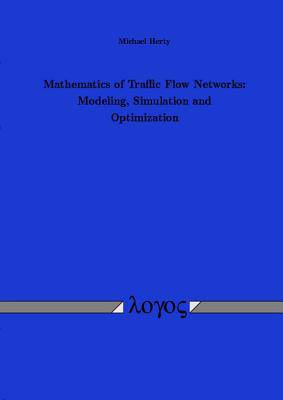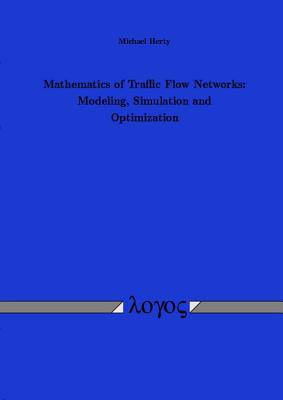
- Afhalen na 1 uur in een winkel met voorraad
- Gratis thuislevering in België vanaf € 30
- Ruim aanbod met 7 miljoen producten
- Afhalen na 1 uur in een winkel met voorraad
- Gratis thuislevering in België vanaf € 30
- Ruim aanbod met 7 miljoen producten
Zoeken
Mathematics of Traffic Flow Networks
Modeling, Simulation and Optimization
Michael Herty
Paperback | Engels
€ 98,45
+ 196 punten
Omschrijving
Traffic flow has been a continuous source of challenging mathematical problems. The following work is dedicated to recent questions in modeling, simulation and optimization of traffic flow networks. Mathematics can help to solve traffic problems in different ways. Modelling provides fundamental understanding of traffic dynamics and behaviour. Optimization yields solutions for complex situations and helps to organize traffic flow. During the last decade there has been intensive research in different fields of and related to traffic flow. One of the primary research activities focus on the development of new and more realistic models for traffic flow on a single road. Our work's primary focus is on models for networks. We provide new ideas on modelling flow in networks and solve different optimization problems analytically and numerically. The main result is the derivation of a hierarchy of models treating different situations with suitable traffic flow models. To each level of modeling we consider the optimal control problems and present techniques to address those problems. Furthermore, we derive an adjoint calculus for scalar hyperbolic equations with nonlinear boundary controls. The derived concepts fit for general network problems as well as they do for traffic flow issues. The principles of modeling and simplification can be applied to all kinds of network flows, like fluid flow in open channels or gas networks.
Specificaties
Betrokkenen
- Auteur(s):
- Uitgeverij:
Inhoud
- Aantal bladzijden:
- 136
- Taal:
- Engels
Eigenschappen
- Productcode (EAN):
- 9783832506186
- Verschijningsdatum:
- 21/07/2004
- Uitvoering:
- Paperback
- Formaat:
- Trade paperback (VS)
- Afmetingen:
- 145 mm x 211 mm
- Gewicht:
- 1046 g

Alleen bij Standaard Boekhandel
+ 196 punten op je klantenkaart van Standaard Boekhandel
Beoordelingen
We publiceren alleen reviews die voldoen aan de voorwaarden voor reviews. Bekijk onze voorwaarden voor reviews.








